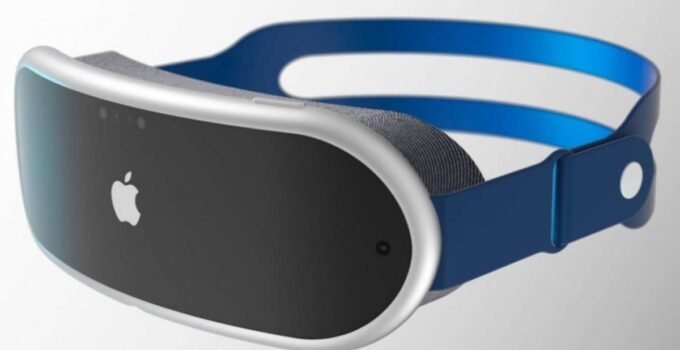The Apple viewer arrives at WWDC23, how it is made, how it works and who is it for. A sci-fi accessory, never seen before, something absolutely innovative even if it remains to be seen how useful and how much it can be sold and how much a sort of development platform in view of a future of virtual reality. These are the conclusions that can be drawn by reading the long series of information that has appeared over the last few months on Apple’s virtual reality viewer which should debut at WWDC on June 5.
OPPO Find N2 Flip review, is it the right foldable?
For now practically for now we are talking about simple rumors; Apple has never confirmed that it has a plan to create such a device. But the level of detail and what can be deduced from Apple’s movements in terms of technologies and acquisitions, make it practically certain that a competitor to Meta’s Quest is now ready in the Cupertino laboratories.
Reality Pro glasses what they are?
Nothing is officially known about this device, not even the name. But in reality at least on the name there seem to be not too many doubts. They should be called Realty Pro or XR Pro alternatively
The name Reality Pro
At the moment, however, the most probable name is Reality Pro. This denomination was registered a few months ago together with that of Reality One and Realty Processor.
The reference to the name Reality is not entirely new. Already in 2017 there was talk of RealityOs or, better rOS, a name of the operating system which at launch could be transformed into xrOs.
In 2019, Apple released a developer framework called RealityKit – a rendering, animation, audio and physics engine – designed to help create Augmented Reality experiences.
What are Reality Pros?
But what are Reality Pros? What are Apple glasses for? A very detailed article published a few months ago by Bloomberg and which for the first time dealt directly and explicitly with the functioning of Reality Pro has revealed its origin and objectives.
It is a viewer capable both of producing images in augmented reality, therefore both of merging live images with others generated by the system and of managing virtual reality environments, therefore created entirely by the CPU and GPU.
As has been known for some time, Apple seems to be working on two completely different viewers: the first for Augmented Reality and Virtual Reality, the Reality Pro, the one we are talking about in this article and which is now ready for launch and a second lighter and more compact one which would be in the form of smart glasses for Augmented Reality. By this we mean a device with transparent lenses that will draw elements that enrich information about the world around us. This second device, still distant in the launch, could be called Reality One
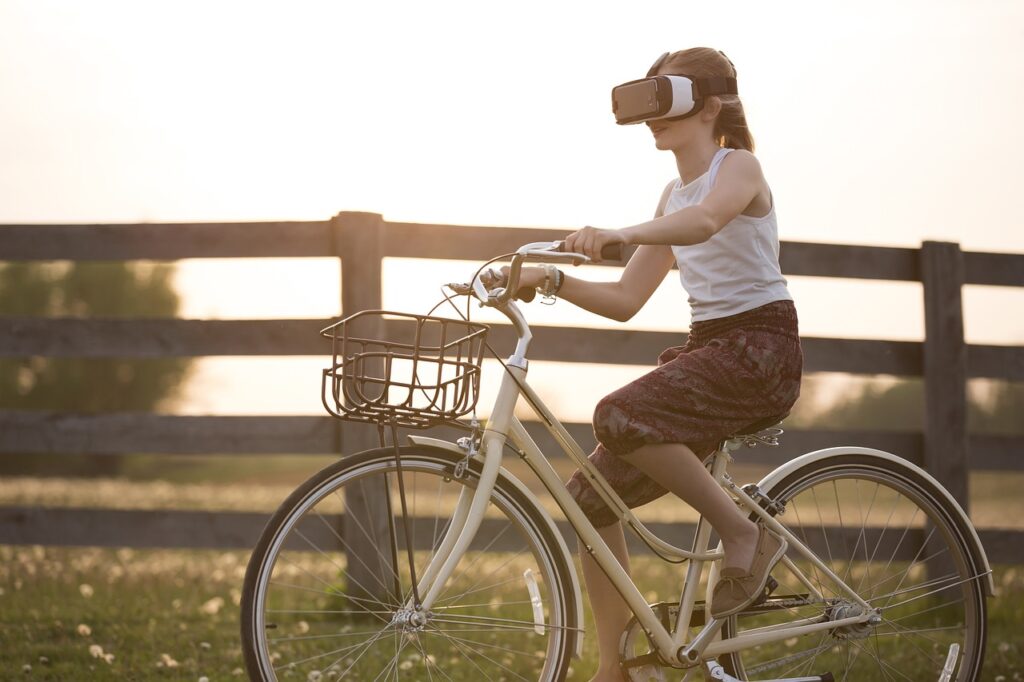
How Reality Pros will be made?
Having said what the Apple viewer is, let’s see how it is done.
For the Reality Pros, Apple’s design effort has been from the very beginning (we have been talking about this accessory since at least 2016) to make a product that none of its competitors has ever thought of or had the opportunity to do. In the first place from an aesthetic point of view: away from the plastic, aluminum and glass will dominate, it will be inspired by the style of the Airpods Max. On the front there will be a curved screen that will allow the user’s eyes to be seen, on the sides there will be speaker.
In part, the design will be borrowed from the Airpods Max headphones which are made of aluminum. The high-quality elastic fabric that makes up the headband will also be adopted by the Reality Pros.
Aesthetically, the Apple glasses will look like a ski goggle. The cameras will be perfectly camouflaged.
Reality Pro technology
The design and materials of the Reality Pros will be just a small fragment of the innovative drive. An article by The Information has described in detail some of the technologies holding the Apple viewer as the most complex device ever designed by Apple, a jumble of innovation, advanced materials and components already seen but which to be adapted to the innovative design and convince the public, have had to be totally rethought.
Content control
For example a revolution should come from the control system. Eyes and hands will work together to handle the functions; to track movements, including those of the eyes, there will be cameras. When you look at a button or a menu, the glasses will know that that is the element of interest. To activate the related function, index and thumb will touch. The cameras will understand the gestures and interpret them.
Note that another Apple device shouldn’t be required for them to work, unlike the Apple Watch for example. However, using an iPhone for input should make it easier to manage content and applications.
The cameras
The Reality Pros will have eight augmented reality cameras and six other modules will be used for posture detection, eye movement and other biometric information. Another chamber will be used for information on the environmental context.
All this will make the glasses capable of reading surfaces, edges of objects and their dimensions. They will include the size of the rooms and the arrangement of the furniture. There will also be LiDAR scanners in action for this purpose
The use of an iris scanning system as an authentication system is also foreseen. An alternative solution to FaceId and Touch ID.
The images produced by the cameras will be digitally corrected. The curved display will in fact produce a distortion of vision with effects of bewilderment and even physical discomfort.
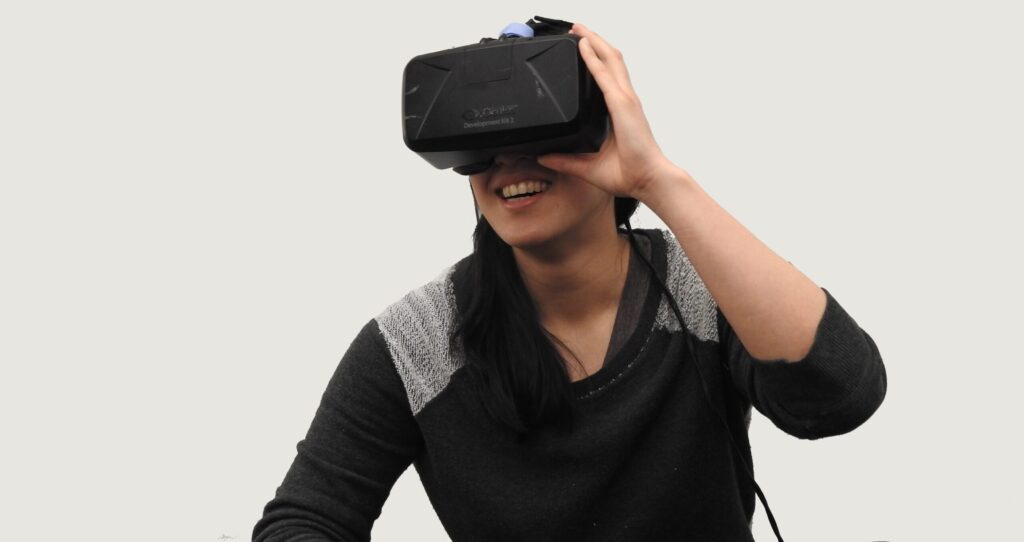
The screen and the sound
According to some information, Apple will use Fresnel lenses, a type of lens characterized by a reduced total thickness which, among other things, allows the construction of less bulky optics. The use of this solution and other innovations would reduce the weight of the Reality Pros to only 150 grams. By comparison, Meta’s Quest Pros weigh 750 grams.
The screen will consist of two ultra-resolution elements, 8 K total 4 per eye, probably specially built by Sony. The displays will pass images from the cameras to the user. The representation of the displays can be of two types: Augmented Reality and Virtual Reality; to switch from one to the other, just rotate a crown similar to that of the Airpods Max. This function should be the strong point of the Reality Pros.
Display technology has given Sony a hard time. Micro OLED screens have been a headache in their own right, of such vast proportions as to force Sony, which supplies them to Apple, to limit production to 250,000 pieces a year due to the size and density of the pixels. These are components so expensive that it has been recommended to repair the defective panels instead of throwing them away as you would in a normal mass production situation.
Eyeglass wearers may be at a disadvantage. To have a clear view in this case it will be necessary to mount additional lenses.
There will be built-in speakers for audio. But better results will be obtained through the adoption of Airpods.
The processor of the Reality Pros
Apple glasses will have not one but two processors. These will be components based on the M2 currently used by a large part of Apple devices. A processor with 4-nanometer circuitry, say the usual deep throats, will have to manage the calculation the second (which could be the Reality Processor mentioned above), from 5 nanometers, the graphics. Their power will be something never seen before in the virtual reality industry. In fact they will be as powerful as those of the Macs on the market today.
An H2 processor will also be used to connect with Airpods to reduce the latency of streaming sound.
The computing power would be so high that it probably also requires a cooling fan. In addition, the battery cannot be integrated, but will be external
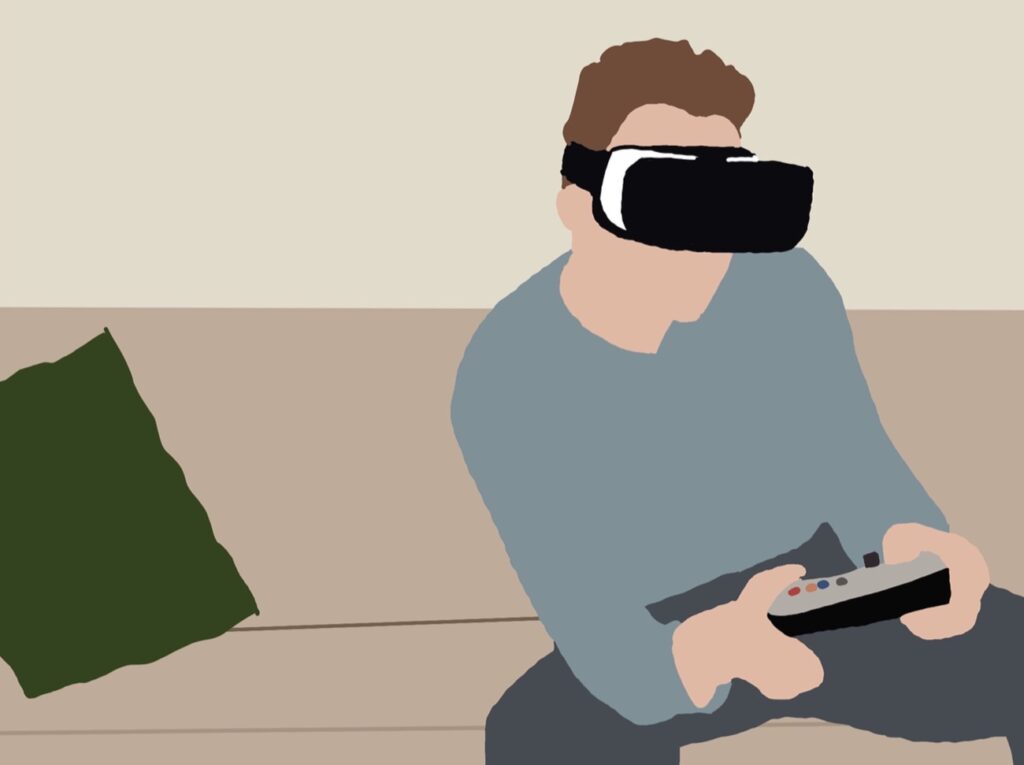
The external battery with cable
The decision to introduce an unprecedented and already much criticized design with an external battery derives from the need not to affect weight and to lengthen autonomy. The battery is one of the main concerns from an engineering point of view.
The battery would connect to the viewer with a magnetic connector similar to that of the Apple Watch which should guarantee the cable that starts from the battery pack to remain firmly connected and not detach during the user’s movements.
This choice seems to have been a bit of a debate within Apple, with the company pushing more and more towards devices free from cables. For the moment it has been preferred to do so; other solutions could be evaluated for future versions of the viewer.
The battery will be 14cm long and about 1.5cm thick. Basically as big as an iPhone 14 Pro Max but twice as thick. Autonomy will be modest: a couple of hours even if the battery should be recharged with a 96W power supply. The same amount of power needed to recharge a MacBook Pro which could mean very fast charging.
Those who wish can eventually purchase an additional battery pack, similar in size to the MagSafe Battery Pack for recent iPhones.
What will the Reality Pros be used for?
But what will all this be for? Who will buy the glasses, what can they do with them? The idea is to make it do a little bit of everything, at least initially while waiting to understand which functions will be most used.
In practical terms, the strategy, as we have written, is the one followed for Apple Watch which has evolved in a precise direction following the preferences of those who bought it, essentially becoming a device for personal health and notifications, focused on customizing faces, leaving aside other ambitions that have proved to be ephemeral and of little interest to the market.
A virtual presence
Firstly, the Reality Pros will be a very advanced virtual presence and communication tool, with a special version of FaceTime, they will operate as an external display on a Mac and reproduce many of the functions of an iPhone or an iPad.
As a FaceTime platform, it will be possible to create virtual rooms in which to meet your interlocutor. The system will allow you to recreate the person with whom we are communicating in full figure. Therefore, no cartoon-style avatars like those invented by Meta. If there are more than two people, due to processor power reasons, the others will appear as icons or Memojis.
The entertainment
The entertainment part is still being defined as regards the contents but Apple is working with some partners (Disney and Dolby among others) to create immersive contents. Obviously Apple itself will also be in the field, which is adapting the Apple TV + library to serve Reality Pros. One of the scenarios described by Bloomberg is the possibility of watching a film giving us the impression of being in space or in a desert. To have quality audio you will have to use Airpods.
Still speaking of entertainment, there will also be games in virtual and augmented reality. Apple already has a platform to build on: ARKit which it launched a couple of years ago and which developers can count on.
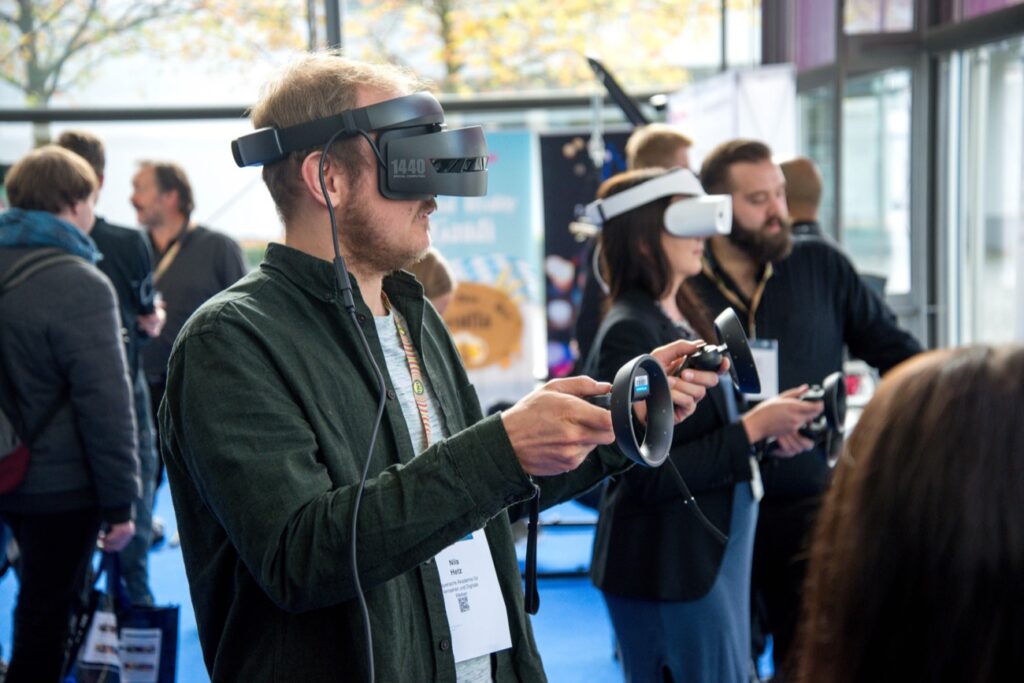
The applications
In the field of productivity, the operating system, called xrOs, will on the one hand borrow the interface of the iPhone and iPad, with the classic grid of icons, on the other it will count on a link with the Mac.
When you log in, the Apple glasses will allow you to sync your iCloud or iPhone account. The home screen will be similar to that of the iPad and the widgets will be recalled according to the user’s preference, changing according to the specific area of the house or the place where it is, changing dynamically.
There will be specific versions of the major applications that Apple has put on the iPad. These include: Books, Camera, Contacts, FaceTime, Files, Freeform, Home, Mail, Maps, Messages, Music, Notes, Photos, Reminders, Safari, Stocks, TV and Weather.
There will also be a new application for physical wellbeing with a specific focus on meditation. Another will bring Fitness+ to the device and another will be related to sports content to watch in virtual reality.
The device will still be able to run the vast majority of iPad applications without any modifications or with minor tweaks. A development kit will help developers create custom programs and optimize existing ones. A simulator will be available that will work on Mac.
The connection with the Mac will also allow you to see the Mac screen in virtual reality and control it with the trackpad or keyboard. Apple would also like to use mid-air gestures to write texts even if Siri will have to do it in the first phase. Alternatively, you can also use the keyboard of the iPhone or iPad.
Who won’t be able to use Apple glasses?
Having said what we have just said above, it is clear that Apple in perspective would like everyone to find something useful and interesting in Realty Pro. But not everyone will be able to use Apple glasses.
In addition to the problem that will arise for those who wear lenses with the consequent need to purchase additional lenses (which will further increase the not modest cost of the Reality Pros), Apple will advise against the glasses to all those who could have problems from the reconstruction of an environment in Virtual reality.
In particular, those who have glasses will not have to use them
- Meniere’s disease (a disease of the inner ear that leads to recurring and particularly disabling vertigo),
- brain damage from post-traumatic stress
- postconcussion syndrome
- migraine and dizziness.
- Pregnant women
- neurodevelopmental disorders such as attention deficit disorder (ADD) or hyperactivity disorder (ADHD)
- pathological anxiety
- heart disease with or without a pacemaker
- epilepsy and seizures
When will the Reality Pros be released?
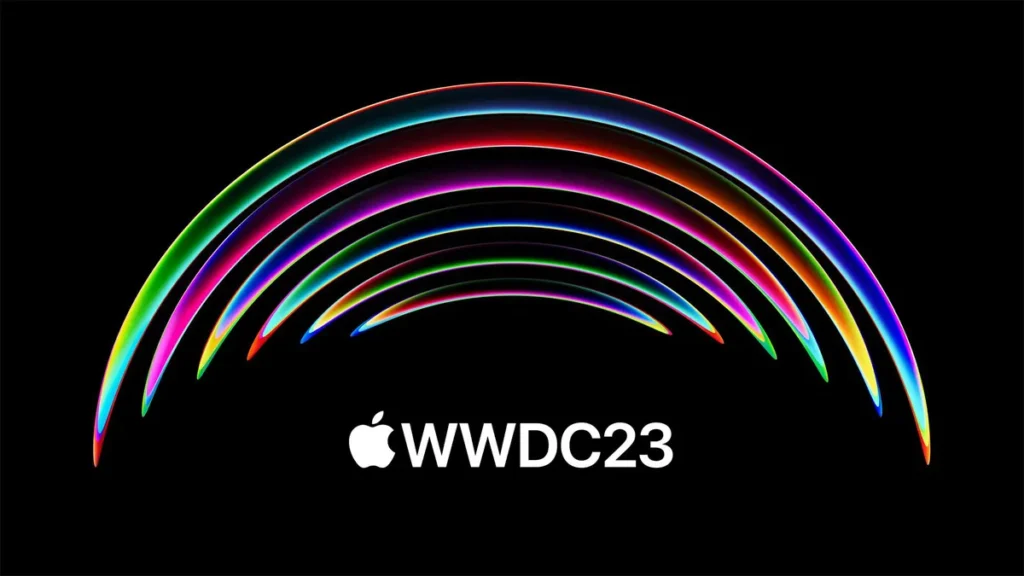
For years it has been rumored that Apple will “launch its glasses within the year”, but for now they have never seen each other. At this point the time has come. Everyone (or almost) agrees that they will be presented at WWDC which opens on June 5, 2023.
For the particularity of the product a demonstration will be essential. Apple has actually prepared a temporary pavilion inside its headquarters in Cupertino, on the surface used by the basketball court. The pavilion is visible in a photo taken from above.
In addition to this, which alone could be enough to confirm that something important to try “live” will be presented at WWDC, there is another aspect that suggests that this “something” is the viewer: at the event were invited many experts and professional operators in the field of virtual reality to whom the device will be presented.
We are talking about presentation and not about marketing. The goal is to show them to developers and industry professionals, explaining all the potential of the device to them. For the actual launch Cupertino will move with absolute caution. On the one hand it has set sales in a year at one million (perhaps less), two hundred times lower than those of the iPhone, on the other hand it will limit the market to the United States alone.
In reality, Apple hopes that the Reality Pro glasses, even without selling or creating profits, can give collateral benefits.
The price of Reality Pros
Coming to the price we have a very tricky factor here. All the technologies we have described and the components are very expensive. Hence the estimate of a price of $3,000 which, translated into euros and adding taxes, will easily bring the price between €3,500 and €4,000 when it goes on sale in Europe (if anything it will be…)
The cost is justified by the materials, technologies and R&D costs. It is not a price for everyone, as mentioned, but for those interested in having a close look at Apple’s future for professional interest. Alternatively it is a product that will represent a status symbol.
